Achim Rettinger
Agent-Based Simulations of Online Political Discussions: A Case Study on Elections in Germany
Mar 31, 2025Abstract:User engagement on social media platforms is influenced by historical context, time constraints, and reward-driven interactions. This study presents an agent-based simulation approach that models user interactions, considering past conversation history, motivation, and resource constraints. Utilizing German Twitter data on political discourse, we fine-tune AI models to generate posts and replies, incorporating sentiment analysis, irony detection, and offensiveness classification. The simulation employs a myopic best-response model to govern agent behavior, accounting for decision-making based on expected rewards. Our results highlight the impact of historical context on AI-generated responses and demonstrate how engagement evolves under varying constraints.
Zero-shot prompt-based classification: topic labeling in times of foundation models in German Tweets
Jun 26, 2024Abstract:Filtering and annotating textual data are routine tasks in many areas, like social media or news analytics. Automating these tasks allows to scale the analyses wrt. speed and breadth of content covered and decreases the manual effort required. Due to technical advancements in Natural Language Processing, specifically the success of large foundation models, a new tool for automating such annotation processes by using a text-to-text interface given written guidelines without providing training samples has become available. In this work, we assess these advancements in-the-wild by empirically testing them in an annotation task on German Twitter data about social and political European crises. We compare the prompt-based results with our human annotation and preceding classification approaches, including Naive Bayes and a BERT-based fine-tuning/domain adaptation pipeline. Our results show that the prompt-based approach - despite being limited by local computation resources during the model selection - is comparable with the fine-tuned BERT but without any annotated training data. Our findings emphasize the ongoing paradigm shift in the NLP landscape, i.e., the unification of downstream tasks and elimination of the need for pre-labeled training data.
POV Learning: Individual Alignment of Multimodal Models using Human Perception
May 07, 2024Abstract:Aligning machine learning systems with human expectations is mostly attempted by training with manually vetted human behavioral samples, typically explicit feedback. This is done on a population level since the context that is capturing the subjective Point-Of-View (POV) of a concrete person in a specific situational context is not retained in the data. However, we argue that alignment on an individual level can boost the subjective predictive performance for the individual user interacting with the system considerably. Since perception differs for each person, the same situation is observed differently. Consequently, the basis for decision making and the subsequent reasoning processes and observable reactions differ. We hypothesize that individual perception patterns can be used for improving the alignment on an individual level. We test this, by integrating perception information into machine learning systems and measuring their predictive performance wrt.~individual subjective assessments. For our empirical study, we collect a novel data set of multimodal stimuli and corresponding eye tracking sequences for the novel task of Perception-Guided Crossmodal Entailment and tackle it with our Perception-Guided Multimodal Transformer. Our findings suggest that exploiting individual perception signals for the machine learning of subjective human assessments provides a valuable cue for individual alignment. It does not only improve the overall predictive performance from the point-of-view of the individual user but might also contribute to steering AI systems towards every person's individual expectations and values.
Heterogeneous Graph-based Trajectory Prediction using Local Map Context and Social Interactions
Nov 30, 2023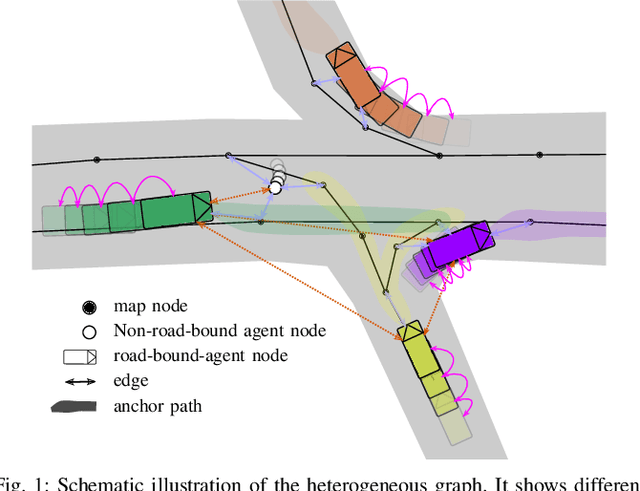
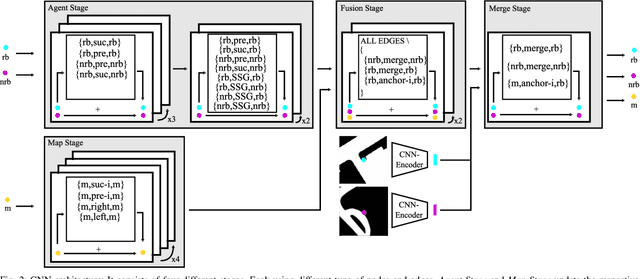
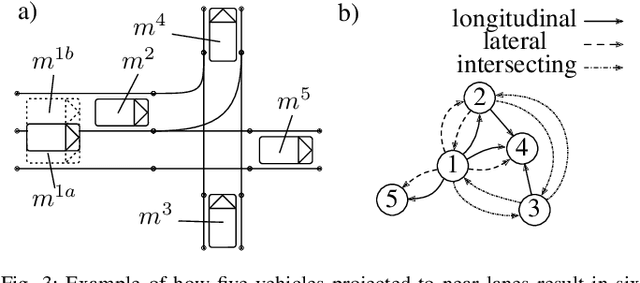
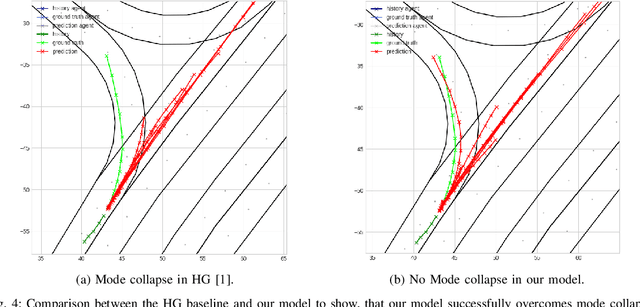
Abstract:Precisely predicting the future trajectories of surrounding traffic participants is a crucial but challenging problem in autonomous driving, due to complex interactions between traffic agents, map context and traffic rules. Vector-based approaches have recently shown to achieve among the best performances on trajectory prediction benchmarks. These methods model simple interactions between traffic agents but don't distinguish between relation-type and attributes like their distance along the road. Furthermore, they represent lanes only by sequences of vectors representing center lines and ignore context information like lane dividers and other road elements. We present a novel approach for vector-based trajectory prediction that addresses these shortcomings by leveraging three crucial sources of information: First, we model interactions between traffic agents by a semantic scene graph, that accounts for the nature and important features of their relation. Second, we extract agent-centric image-based map features to model the local map context. Finally, we generate anchor paths to enforce the policy in multi-modal prediction to permitted trajectories only. Each of these three enhancements shows advantages over the baseline model HoliGraph.
Relation-based Motion Prediction using Traffic Scene Graphs
Nov 24, 2022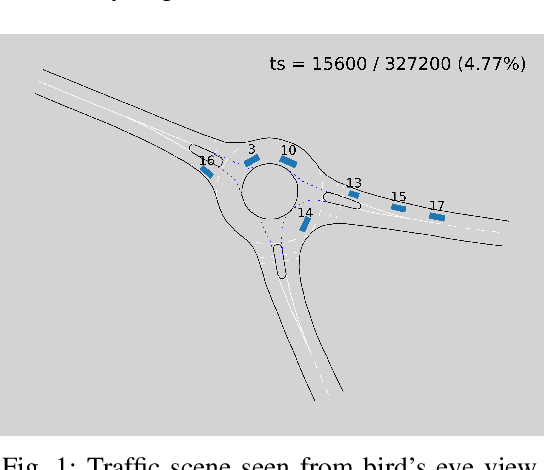
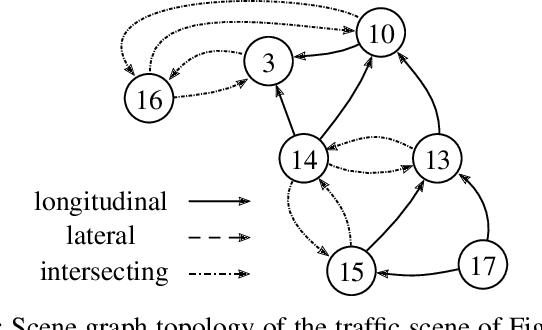
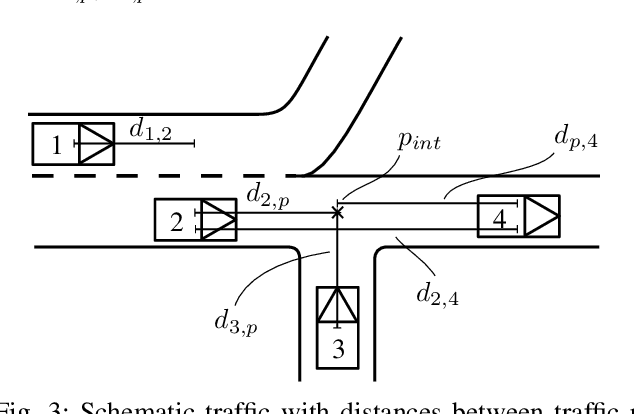
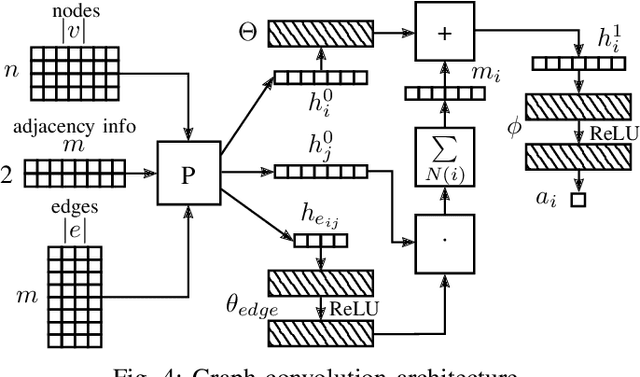
Abstract:Representing relevant information of a traffic scene and understanding its environment is crucial for the success of autonomous driving. Modeling the surrounding of an autonomous car using semantic relations, i.e., how different traffic participants relate in the context of traffic rule based behaviors, is hardly been considered in previous work. This stems from the fact that these relations are hard to extract from real-world traffic scenes. In this work, we model traffic scenes in a form of spatial semantic scene graphs for various different predictions about the traffic participants, e.g., acceleration and deceleration. Our learning and inference approach uses Graph Neural Networks (GNNs) and shows that incorporating explicit information about the spatial semantic relations between traffic participants improves the predicdtion results. Specifically, the acceleration prediction of traffic participants is improved by up to 12% compared to the baselines, which do not exploit this explicit information. Furthermore, by including additional information about previous scenes, we achieve 73% improvements.
Context-driven Visual Object Recognition based on Knowledge Graphs
Oct 20, 2022
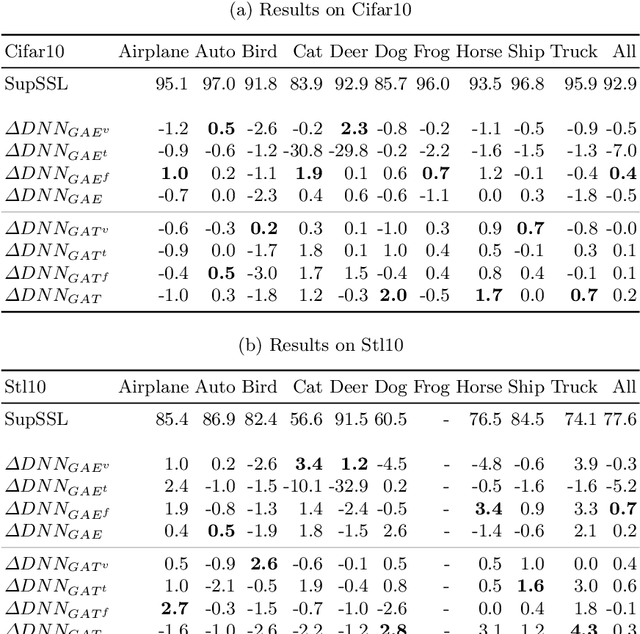
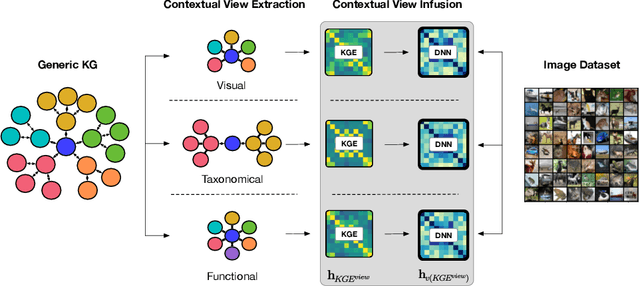
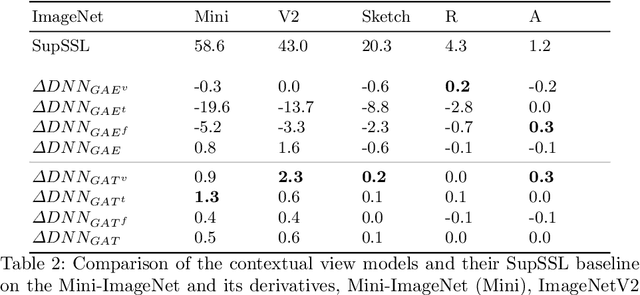
Abstract:Current deep learning methods for object recognition are purely data-driven and require a large number of training samples to achieve good results. Due to their sole dependence on image data, these methods tend to fail when confronted with new environments where even small deviations occur. Human perception, however, has proven to be significantly more robust to such distribution shifts. It is assumed that their ability to deal with unknown scenarios is based on extensive incorporation of contextual knowledge. Context can be based either on object co-occurrences in a scene or on memory of experience. In accordance with the human visual cortex which uses context to form different object representations for a seen image, we propose an approach that enhances deep learning methods by using external contextual knowledge encoded in a knowledge graph. Therefore, we extract different contextual views from a generic knowledge graph, transform the views into vector space and infuse it into a DNN. We conduct a series of experiments to investigate the impact of different contextual views on the learned object representations for the same image dataset. The experimental results provide evidence that the contextual views influence the image representations in the DNN differently and therefore lead to different predictions for the same images. We also show that context helps to strengthen the robustness of object recognition models for out-of-distribution images, usually occurring in transfer learning tasks or real-world scenarios.
Signing the Supermask: Keep, Hide, Invert
Feb 17, 2022



Abstract:The exponential growth in numbers of parameters of neural networks over the past years has been accompanied by an increase in performance across several fields. However, due to their sheer size, the networks not only became difficult to interpret but also problematic to train and use in real-world applications, since hardware requirements increased accordingly. Tackling both issues, we present a novel approach that either drops a neural network's initial weights or inverts their respective sign. Put simply, a network is trained by weight selection and inversion without changing their absolute values. Our contribution extends previous work on masking by additionally sign-inverting the initial weights and follows the findings of the Lottery Ticket Hypothesis. Through this extension and adaptations of initialization methods, we achieve a pruning rate of up to 99%, while still matching or exceeding the performance of various baseline and previous models. Our approach has two main advantages. First, and most notable, signed Supermask models drastically simplify a model's structure, while still performing well on given tasks. Second, by reducing the neural network to its very foundation, we gain insights into which weights matter for performance. The code is available on GitHub.
A Survey on Visual Transfer Learning using Knowledge Graphs
Jan 27, 2022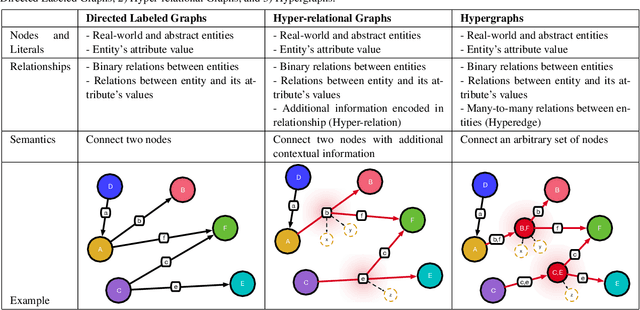

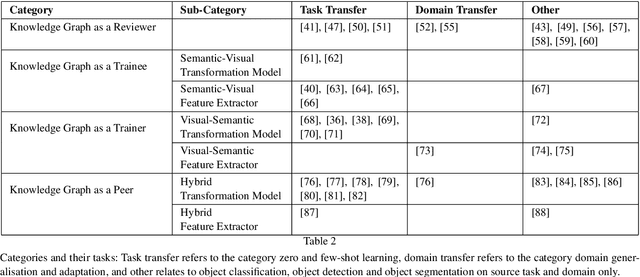
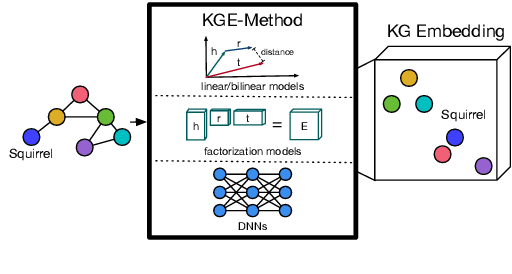
Abstract:Recent approaches of computer vision utilize deep learning methods as they perform quite well if training and testing domains follow the same underlying data distribution. However, it has been shown that minor variations in the images that occur when using these methods in the real world can lead to unpredictable errors. Transfer learning is the area of machine learning that tries to prevent these errors. Especially, approaches that augment image data using auxiliary knowledge encoded in language embeddings or knowledge graphs (KGs) have achieved promising results in recent years. This survey focuses on visual transfer learning approaches using KGs. KGs can represent auxiliary knowledge either in an underlying graph-structured schema or in a vector-based knowledge graph embedding. Intending to enable the reader to solve visual transfer learning problems with the help of specific KG-DL configurations we start with a description of relevant modeling structures of a KG of various expressions, such as directed labeled graphs, hypergraphs, and hyper-relational graphs. We explain the notion of feature extractor, while specifically referring to visual and semantic features. We provide a broad overview of knowledge graph embedding methods and describe several joint training objectives suitable to combine them with high dimensional visual embeddings. The main section introduces four different categories on how a KG can be combined with a DL pipeline: 1) Knowledge Graph as a Reviewer; 2) Knowledge Graph as a Trainee; 3) Knowledge Graph as a Trainer; and 4) Knowledge Graph as a Peer. To help researchers find evaluation benchmarks, we provide an overview of generic KGs and a set of image processing datasets and benchmarks including various types of auxiliary knowledge. Last, we summarize related surveys and give an outlook about challenges and open issues for future research.
InvBERT: Text Reconstruction from Contextualized Embeddings used for Derived Text Formats of Literary Works
Sep 21, 2021



Abstract:Digital Humanities and Computational Literary Studies apply text mining methods to investigate literature. Such automated approaches enable quantitative studies on large corpora which would not be feasible by manual inspection alone. However, due to copyright restrictions, the availability of relevant digitized literary works is limited. Derived Text Formats (DTFs) have been proposed as a solution. Here, textual materials are transformed in such a way that copyright-critical features are removed, but that the use of certain analytical methods remains possible. Contextualized word embeddings produced by transformer-encoders (like BERT) are promising candidates for DTFs because they allow for state-of-the-art performance on various analytical tasks and, at first sight, do not disclose the original text. However, in this paper we demonstrate that under certain conditions the reconstruction of the original copyrighted text becomes feasible and its publication in the form of contextualized word representations is not safe. Our attempts to invert BERT suggest, that publishing parts of the encoder together with the contextualized embeddings is critical, since it allows to generate data to train a decoder with a reconstruction accuracy sufficient to violate copyright laws.
ConTraKG: Contrastive-based Transfer Learning for Visual Object Recognition using Knowledge Graphs
Feb 17, 2021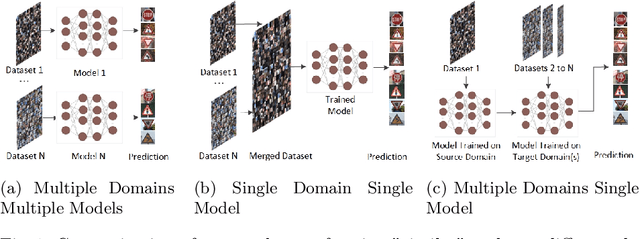
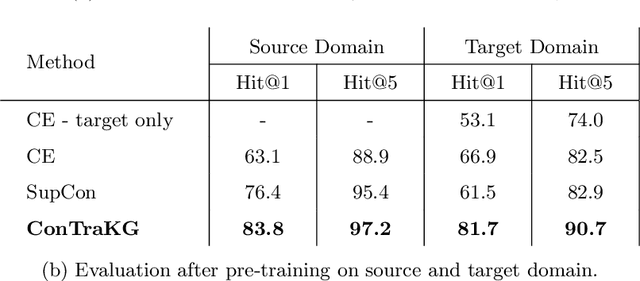

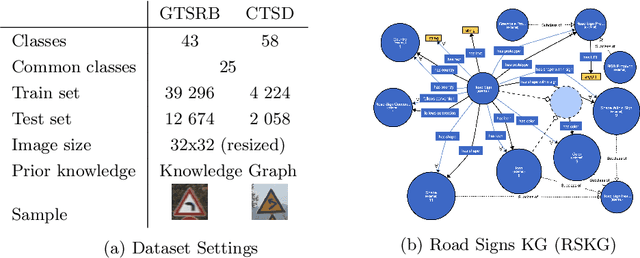
Abstract:Deep learning techniques achieve high accuracy in computer vision tasks. However, their accuracy suffers considerably when they face a domain change, i.e., as soon as they are used in a domain that differs from their training domain. For example, a road sign recognition model trained to recognize road signs in Germany performs poorly in countries with different road sign standards like China. We propose ConTraKG, a neuro-symbolic approach that enables cross-domain transfer learning based on prior knowledge about the domain or context. A knowledge graph serves as a medium for encoding such prior knowledge, which is then transformed into a dense vector representation via embedding methods. Using a five-phase training pipeline, we train the deep neural network to adjust its visual embedding space according to the domain-invariant embedding space of the knowledge graph based on a contrastive loss function. This allows the neural network to incorporate training data from different target domains that are already represented in the knowledge graph. We conduct a series of empirical evaluations to determine the accuracy of our approach. The results show that ConTraKG is significantly more accurate than the conventional approach for dealing with domain changes. In a transfer learning setup, where the network is trained on both domains, ConTraKG achieves 21% higher accuracy when tested on the source domain and 15% when tested on the target domain compared to the standard approach. Moreover, with only 10% of the target data for training, it achieves the same accuracy as the cross-entropy-based model trained on the full target data.
 Add to Chrome
Add to Chrome Add to Firefox
Add to Firefox Add to Edge
Add to Edge